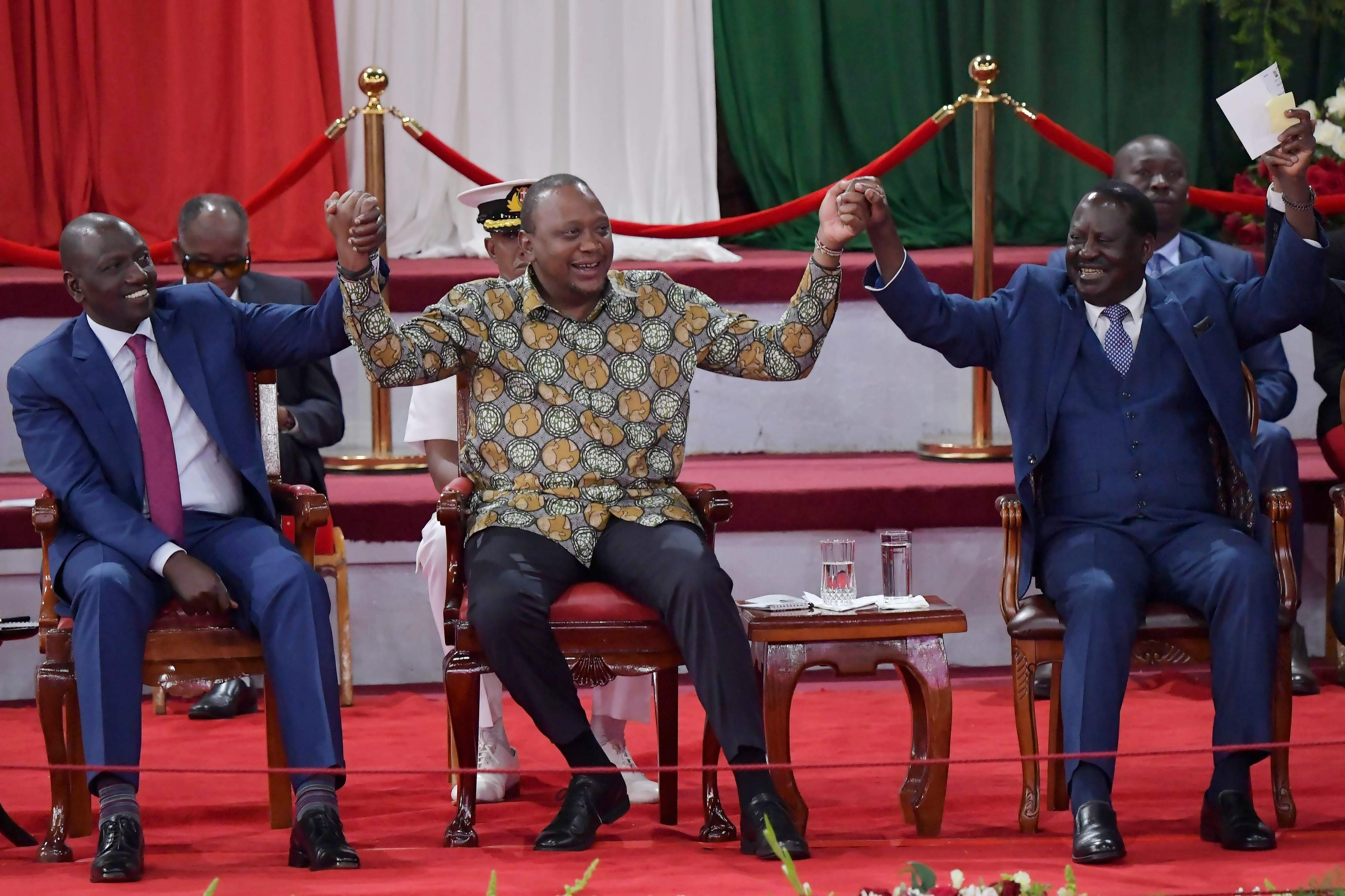Premium
Isiolo’s future lies in being our second city

An aerial view of Isiolo town in this picture taken on December 8, 2020.
What you need to know:
- Isiolo was a key node in the minds of those who conceived the Lamu Port-South Sudan-Ethiopia-Transport (Lapsset) project.
- With our eye to Ethiopia, Kenya has no choice but to position Lamu to grab Djibouti's lunch. Or at any rate a good chunk of it.
There's a case to be made for Isiolo becoming our second city after Nairobi. Geography, for starters. It occupies a space somewhere approximating the centre of Kenya than any other town. A space that roughly falls between the more prosperous and agriculturally productive southern half of the country and the arid and less-developed north.
Isiolo was a key node in the minds of those who conceived the Lamu Port-South Sudan-Ethiopia-Transport (Lapsset) project.
The roughly Sh3 trillion project will definitely be a game changer if completed.
Under the plan, Isiolo will be the intersection of highways, standard gauge railway (SGR) lines and oil pipelines to and from Addis Ababa and Juba, all converging at the recently launched modern Lamu port.
An international airport has already been built in Lamu. It is under-utilised for now, but its prospects could be enormous.
The 504km stretch of highway from Isiolo to Moyale, on the border with Ethiopia, has been completed.
This is where matters get interesting. Ethiopia is a humongous country of 110 million people, the second most populous in Africa. It has the second biggest economy in eastern Africa after ours, and it's growing faster than most.
Grab Djibouti’s lunch
The beauty of it all from our perspective is that the place is landlocked. It lost its Red Sea outlet of Massawa when Eritrea seceded in 1991.
Most of Ethiopia's international trade is now conducted through the port of Djibouti, with Ethiopia having invested in an electrified SGR line to the port.
With our eye to Ethiopia, Kenya has no choice but to position Lamu to grab Djibouti's lunch. Or at any rate a good chunk of it.
Kenya's economy has the sophistication and services which can best aid Ethiopia's growth than any other state in the region can.
Investing in Ethiopia's growth will certainly propel ours too. That's a no-brainer. Recently the northern neighbour signed a ground-breaking deal allowing Safaricom to enter and do business there.
So important was the deal that President Uhuru Kenyatta flew to Addis Ababa to witness the signing ceremony.
The other link planned by Lapsset is to South Sudan. They have plenty of oil, but have had issues exporting it through Port Sudan. This gave rise to the idea of building a pipeline through Isiolo to Lamu.
And a highway too, which would cut out the need for goods to South Sudan being trucked through the Eldoret-Kapenguria-Lodwar route, or through Uganda.
The shortened route would go from Lokichoggio through Lodwar and then cut through Samburu county to Isiolo.
Will the expensive investments linking to South Sudan be cost-effective? Probably not in the short-term.
But clearly in the longer term there will be incalculable benefits of placing South Sudan irrevocably within the orbit of Kenya's economy.
Uganda is our keen competitor in this enterprise. The dash to enlist South Sudan into the East African Community in 2016 before that country's metrics were right was indicative of that competition.
Comparative advantage
However, we have a comparative advantage over Uganda. We are not landlocked. Plus our economic environment has much more to offer.
That's why South Sudan's political and military elite prefer running their private businesses from Kenya. Many have second homes here too.
All the cards geography has placed in Kenya's hands should be played with a sharp strategic mind.
Developing Lamu and Isiolo is seen as key to opening up areas like Marsabit and the former North-Eastern province. That's laudable. But Somalia should be in the calculus too. For different reasons.
Officially, the Kenya Defence Forces’ mission in that country is to fight al-Shabaab.
Less spoken of is a Kenyan endeavour to prop up the Juba region of Somalia as an autonomous statelet. The primary intention is for Jubaland to act as a buffer between unruly Somalia and Kenya.
The western boundary of Jubaland extends all the way from the eastern tip of Mandera to the Indian Ocean coast, adjacent to Lamu.
Jubaland is the natural hinterland of Lamu. And of an Isiolo city too.
Only incurable optimists foresee Somalia stabilising soon. What we see now is the evolution of autonomous and semi-autonomous regions like Jubaland, Puntland, Galmudug and others, all of them demarcated along clan lines.
The Ogadenis are dominant in Jubaland and in North-Eastern Kenya. Hence Kenya's ardent interest. Even if Somalia were to continue imploding, Kenya's hold on Jubaland will give us a measure of security.
Artificial capital cities
The infrastructure convergence of roads, rail and the Lamu port will act as the spur to Isiolo's expansion.
Nairobi began life as a rail depot. We have seen capital cities created artificially to serve political needs. Think Abuja in Nigeria.
Isiolo is at the geographical centre of Kenya as Abuja is in Nigeria.
An Isiolo that is a transport and communications hub would be better wired, tradewise, with neighbouring states than Abuja is now. There's potential in this town.
Of course, Isiolo is not going to replace Nairobi as the heartbeat of Kenya any time soon. Same way Abuja has not dislodged Lagos. Nairobi's centrality in our country's commercial life will remain unchallenged for the forseeable future.
Isiolo will come in as a complement in advancing our economic footprint in eastern Africa.
@GitauWarigi





